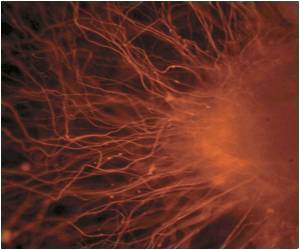
The findings revealed that there is a pathway of young migrating neurons targeting the prefrontal cortex of the human brain in the first few months of life. After the first year of life, the subventricular zone of the brain slows down, tapering production of new brain cells by the time a child is 18-months and then to nearly zero by age two. This revelation settles conflicting prior reports that suggested that human neural stem cell cells remain highly active into adulthood.
"In the first few months of life, we identified streams of newly-generated cells from the subventricular portion of the brain moving toward the frontal cortex," says Dr. Sanai. "The existence of this new pathway, which has no known counterpart in all other studied vertebrates, raises questions about the mechanics of how the human brain develops and has evolved."
Researchers believe this study holds important implications for the understanding of neonatal brain diseases that can cause death or devastating, life-long brain damage. These conditions include germinal matrix hemorrhages, the most common type of brain hemorrhage that occurs in infants; and perinatal hypoxic – ischaemic injuries, exposure to low oxygen and decreased blood flow that can lead to diseases such as cerebral palsy and seizure disorders.
"The first year of human life has a window of vulnerability, as well as tremendous opportunity, for the brain," says Dr. Sanai. "It's a period of incredible growth, organization, and flexibility, as fresh neural connections are created, broken, and remade. A better understanding of how things can go wrong in that critical period could ultimately improve the chances that things will go right."
Source-Eurekalert














